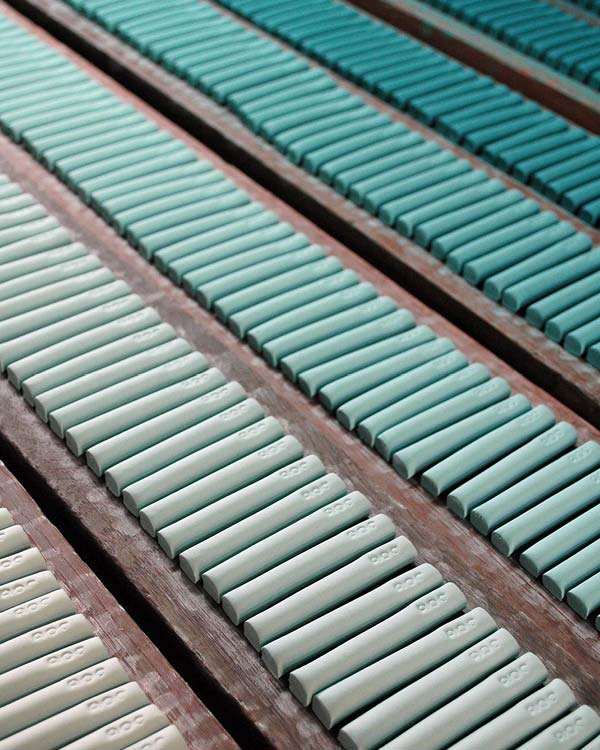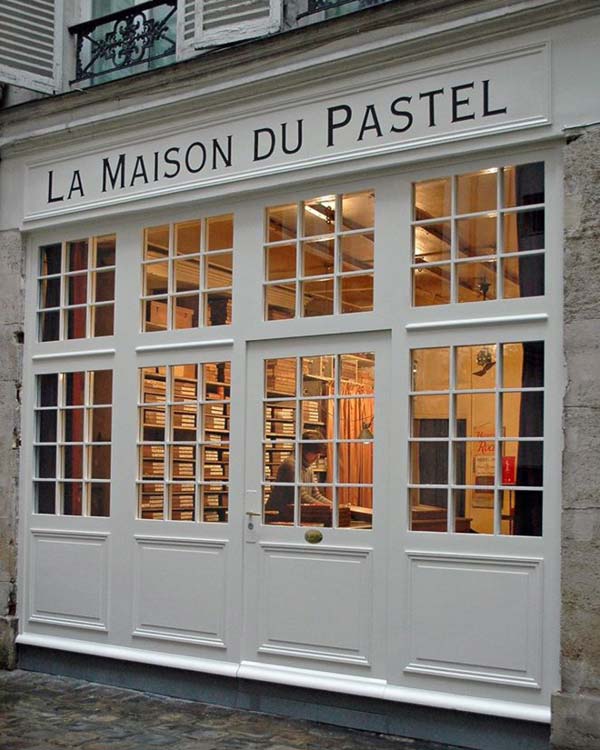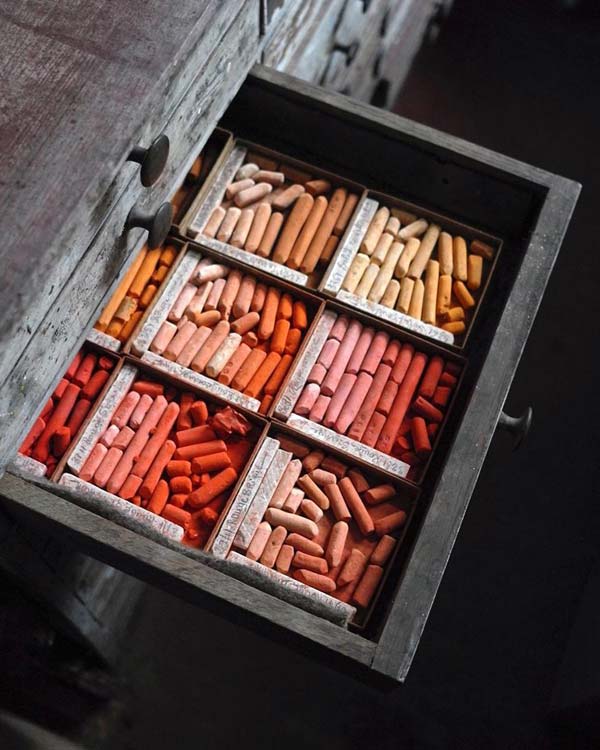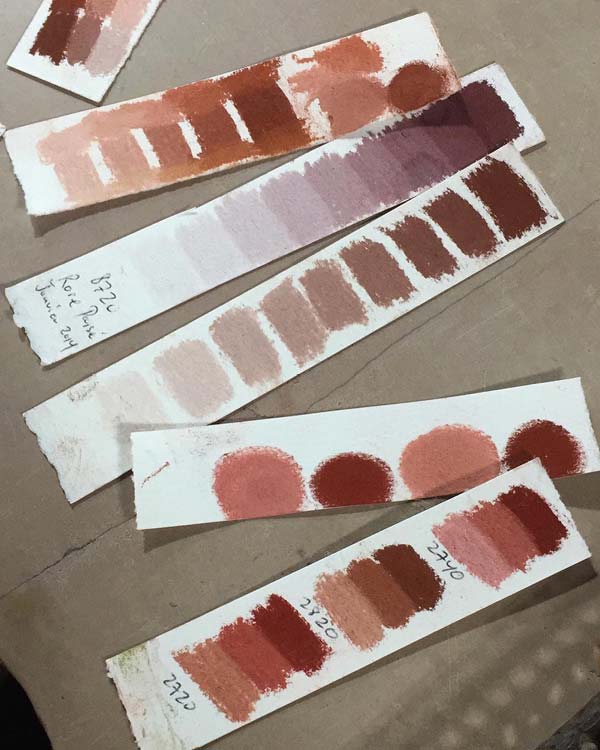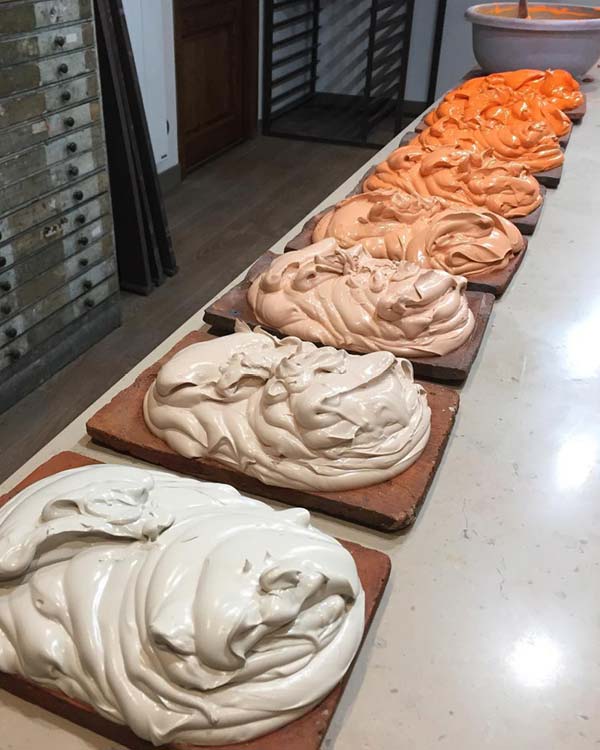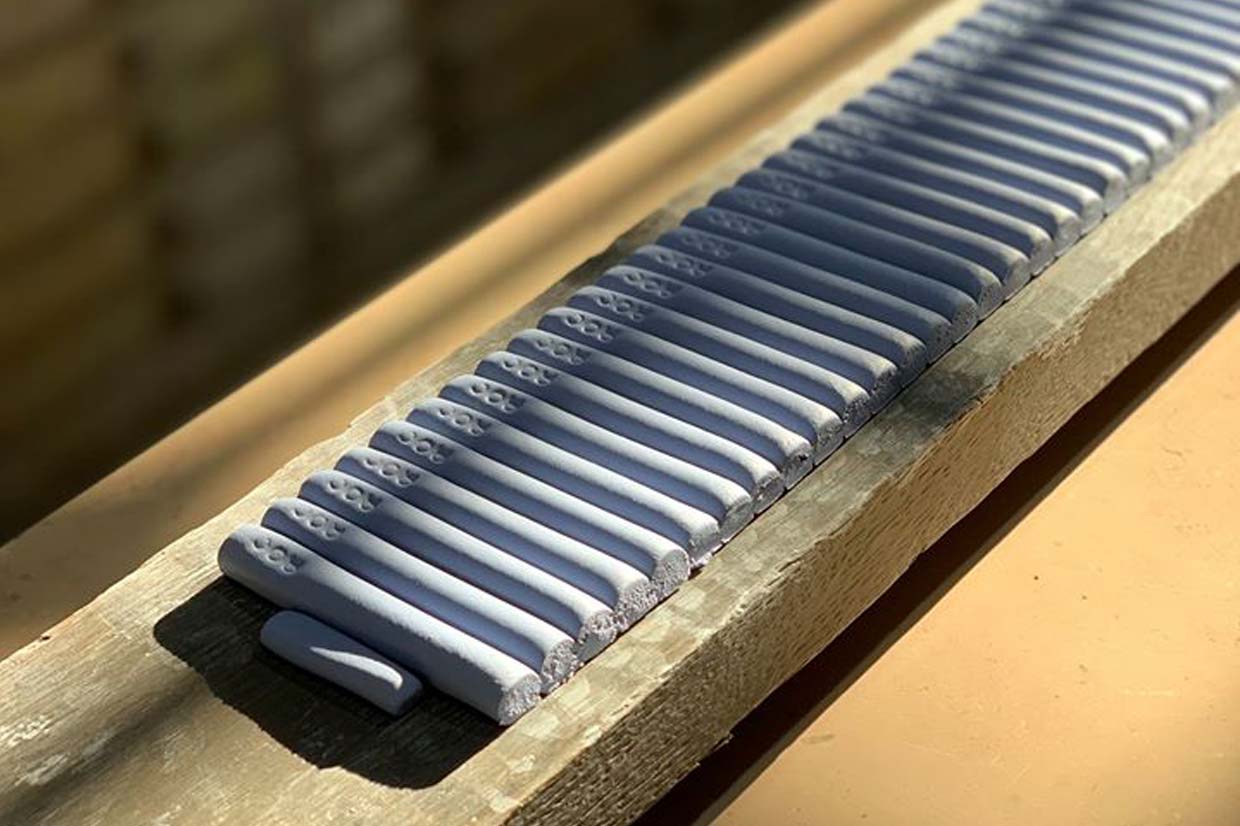
TRANSFERRING MASTERY ACROSS GENERATIONS AT ‘LA MAISON DU PASTEL’
One of the wonderful benefits of family businesses is the ability to pass on mastery from one generation to the next. True craftsmanship can be lost when there is no next generation to put in the hard work, spend the vast number of hours mastery requires, develop the unwavering passion, carry on the secrets, to in fact fall in love with the task at hand.
In a tribute to true artistry (a rare find today), let’s delve into the incredible story of pastel making where the bond of family has kept the business alive for nearly 300 years.
THE BEGINNING OF LA MAISON DU PASTEL
Being the oldest pastel manufacturer in the world, the story of “La Maison du Pastel” starts at the beginning of the 18th century. However, the family story starts a little later with Henri Roché – a chemical engineer, chemist, biologist, gold medallist of the “Société de Pharmacie” and of the “École de Pharmacie de Paris”, who was also very interested in art.
He started working with the old artisan of the “Maison” and became fascinated by the pastels, dreaming of making it a primary technique for artists. While his pharmacy was successful, it did not fulfil his love of research, so he sold it and bought the old “Maison” in 1865. He continued to work closely with the old artisan, who taught him the traditional techniques of creating pastels. Roché then used his scientific background to layer in new processes to the manufacturing. Innovation through the intersection of art and science.
Roché decided to stop the sale of all their other products to dedicate himself completely to pastels, growing the range from 100 to around 500 by 1887. From then on, “La Maison du Pastel” went from strength to strength, and Roché pastels received worldwide acclaim.
As Countess Anna de Noailles reflected “To Mr. Henri Roché, who for the happiness of painters and poets, has grouped, with the most certain talent, all the world’s colours in his radiant pastels.”
THE SECOND GENERATION AND THE IMPACT OF WAR
Henri’s son, also called Henri, first became a doctor before also showing interest in the pastels in 1906, bringing once again an intersection of science and art to the business. He started dividing his time between his medical practice and his father’s work and research.
Dr. Roché’s close relationship with artists (like his father) allowed him to further improve the quality of the pastels. This culminated in 1937 when he won a Gold Medal for his range of 1650 colours.
Sadly, disruption to the business followed with the first world war, and the second world war put a complete stop to all activity. The art of pastel making, the ‘Roché way’ was in jeopardy.
THE THIRD GENERATION AND KEEPING THE SKILLS ALIVE
After the war, despite being old and unwell, Dr. Roché still had passion for pastels. He started up a medical practice in Eastern France to finance the restoration of the business, and with his wife and daughters, started up the pastel workshop again.
Dr Henri Roché died in 1948, but the skills and secrets of the pastel manufacturing were safe with his three daughters, Huberte, Denise, and Gisèle.
By end of the 1990s, the sisters were now in their 80s, stocks had dwindled and The Maison had nearly come to a halt. Without a successor to carry on the craft, the legacy of the pastels would be lost forever. Huberte turned to Marc and Françoise – distant cousins they had recently reunited with – who started off by delivering pastels to the artists.

Photo by Paul Maze.
THE FOURTH GENERATION REBUILDS TO FORMER GLORY
In 1999 enter the daughter of Marc and Françoise – Isabelle Roché – a young engineer working in the petroleum industry. The third instance of art meets science. As she sees her parents’ negotiations with Huberte, she slowly becomes fascinated by the history of the company and of the pastels, and marvels at the range and the intense beauty of their colours.
After Huberte passes away in November 1999, Isabelle decides to quit her profession, and officially takes over La Maison du Pastel in May 2000. In the beginning, she is taught the art and techniques by Denise, assisted by her father, and cheered on by loyal clients. Many of whom have a long history with the company. Within two years, she brings the range up to around 300 colours, and by 2007, she has a range of 567 on her own.
Not long after, Isabelle started getting assistance from Margaret – an art student who came to help one summer. She too had fallen for the pastels and together their goal was to bring the Maison back to its original glory.
In 2012 they launched the “Petits Roché”, a limited range of half-sticks, and then kept introducing new ranges – the collection, as of 2019, consists of 1503 colours.
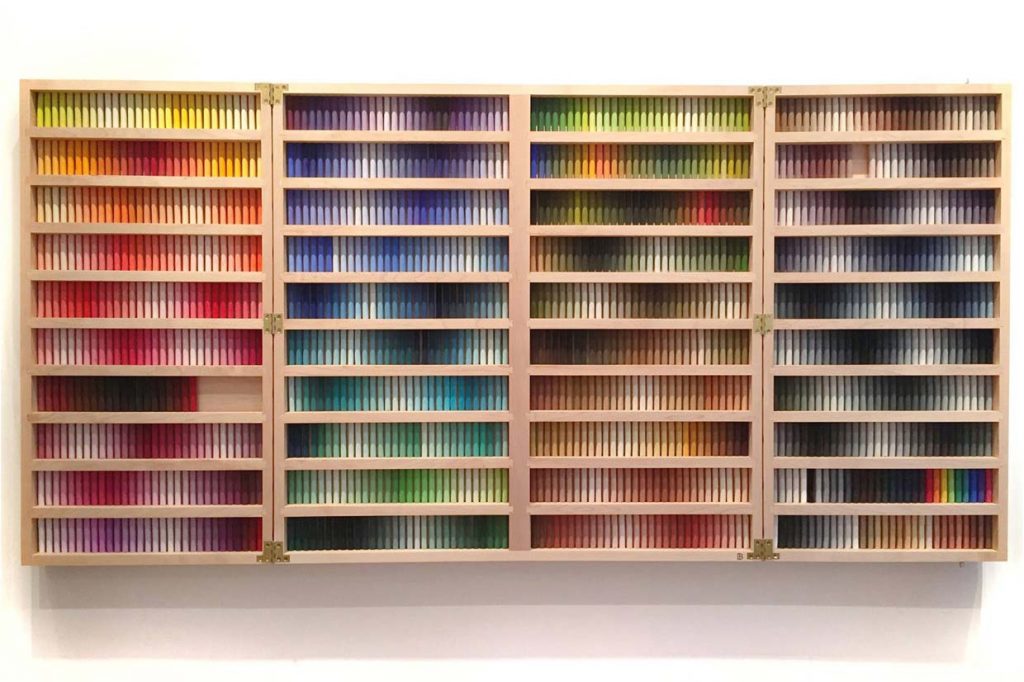
AND NOW?
“La Maison du Pastel”, an unassuming, little boutique in the Marais district is virtually unchanged since the 1920s. There is little from the outside to suggest its long history apart from an old tin plate marked “H. Roche” still attached to the door.
Like any luxury item, the pastels are expensive and hard to find. The pastels are crafted with the highest quality ingredients, to create the most incredible, intense colours. And to this day the pastels are made entirely by hand using the techniques handed down through each generation.
The role of family in keeping mastery alive is undeniable.
Know of any other artistry being kept alive in a family business? We would love to hear about it.
OTHER STORIES
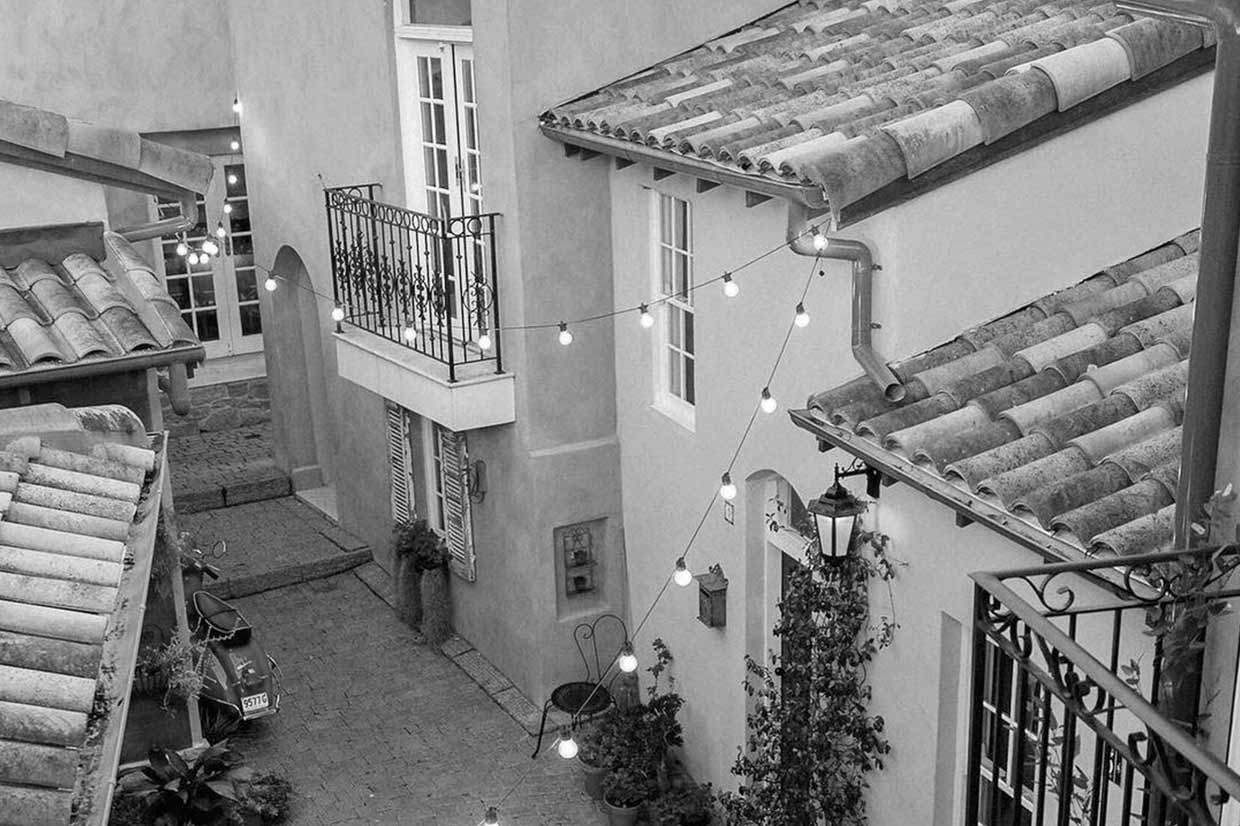
THINGS WE LOVE: GUESTLANDS
New South Wales is free! Which means it’s time to explore our region. We’ve found a Tuscan-inspired getaway just 40 minutes from Sydney CBD that’s sure to have you thinking you’ve hopped a flight in Europe.
read more
OLLI ELLA – TWO SISTERS WHO NEVER QUITE GREW OUT OF BEING KIDS
Spend time with Chloe and Olivia Brookman – the two founders of Olli Ella. These sisters combine their nomadic lifestyle, playful, carefree aesthetic and quest for functionality in their sustainably made homewares, apparel, children’s products and toy collection.
read more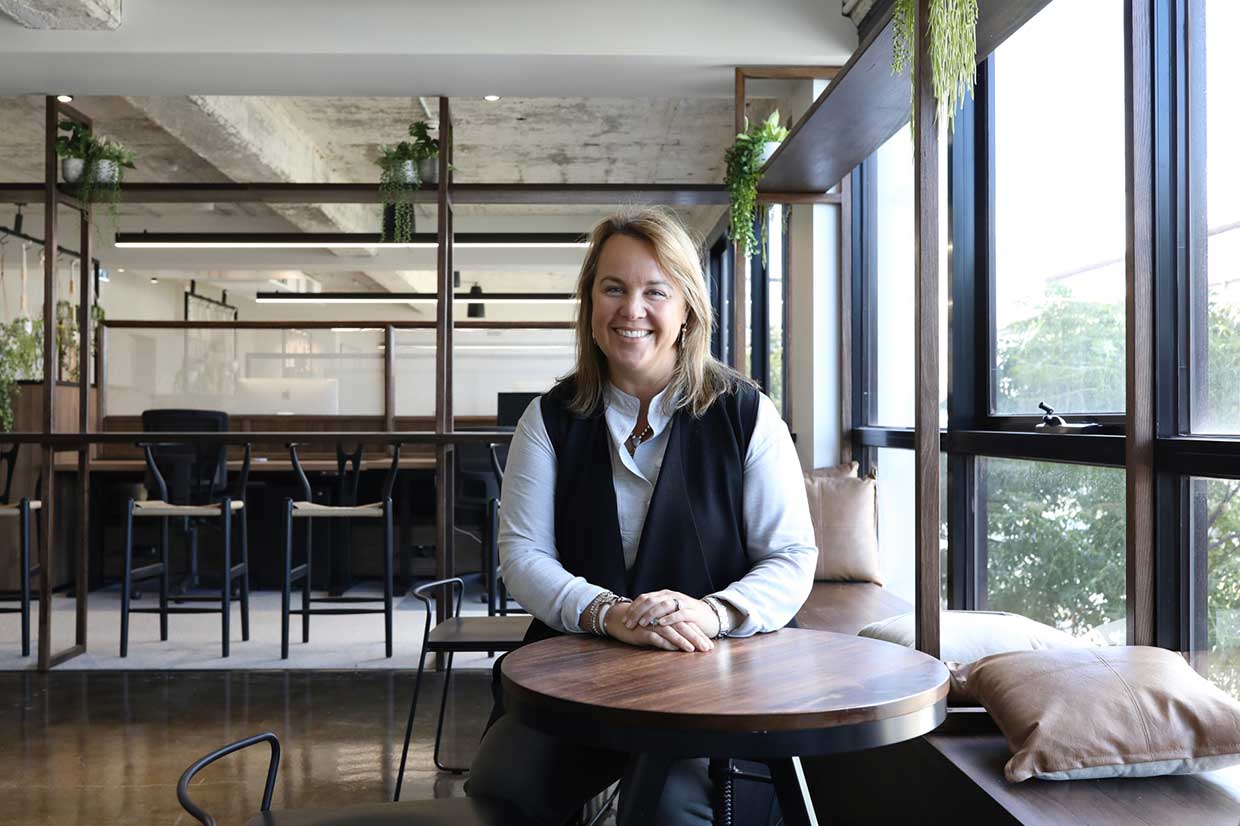
HOW A TINY MUESLI COMPANY BECAME A GLOBAL SUCCESS
Carman’s is the only brand showing consistent growth in the breakfast category and a much-loved icon. Here, founder Carolyn Creswell shares her incredible story.
read more
